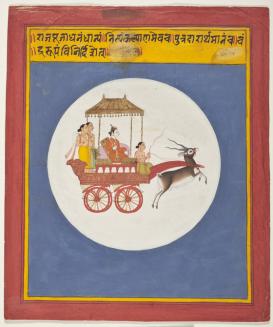This project investigates the material culture and visual imagery representing the astral divinities and heavenly knowledge as they existed in South Asia, particularly in India, and its interactions with Central and East Asian astral and cosmological knowledge systems. Besides art objects—paintings, sculptures, illustrated manuscripts, and textiles—my research draws on literary and religious works. An essential component of the project deals with the identification and interpretation of visual imagery depicting the Navagrahas (the nine Indian planetary deities), astral deities, and the idea/s of the Universe. The inscribed texts on art objects in Sanskrit, Hindi, and Braj form a strong basis to examine the interplay between literary sources and visual imagery. The research therefore approaches the subject in a way that focuses on how the textual sources shaped the formal and iconographic elements and attributes of these divinities. It situates the objects in their religious and cultural contexts and investigates how the astral and heavenly divinities came to be defined and conceptualized in the abundant myths and legends in Indian astrological texts, Puranas, the epics—the Ramayana, and the Mahabharata—and manuals of rituals. An associated, and important, aspect to examine will be the use of these images as ritual or cult objects and also various astrological rites and rituals, for instance, santipath (rituals of appeasement) involved in worship of Navagrahas. Since implications of the research go far beyond the Indian subcontinent, the project also addresses how Indian astrological and cosmological art was transmitted to and interacted with equivalent knowledge systems and art in Central and East Asian cultures.

Candra, Mewar
Udaipur, Rajasthan, India, 1700 – 1725
Los Angeles County Museum for Art, Los Angeles, USA
Project
(2022)
